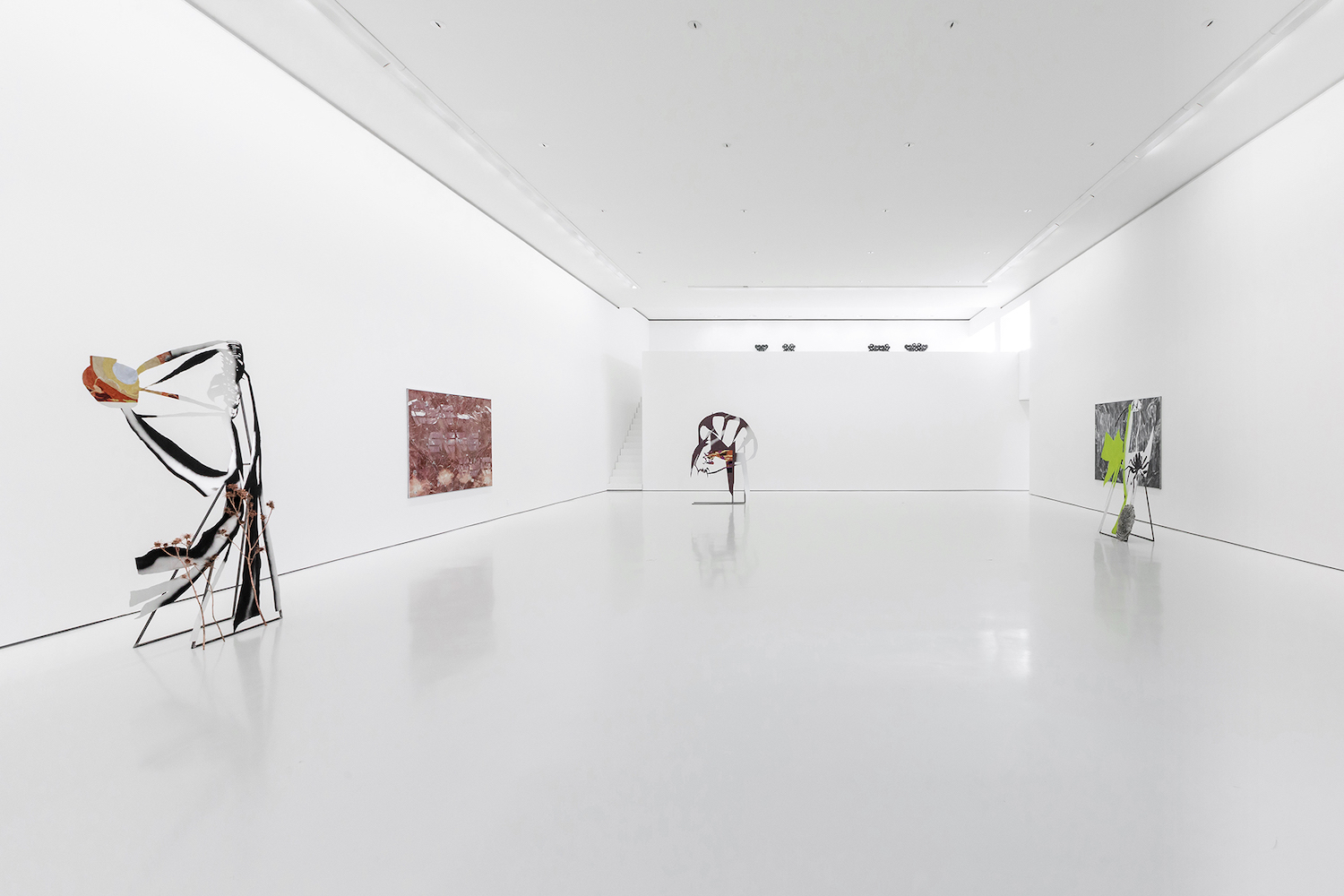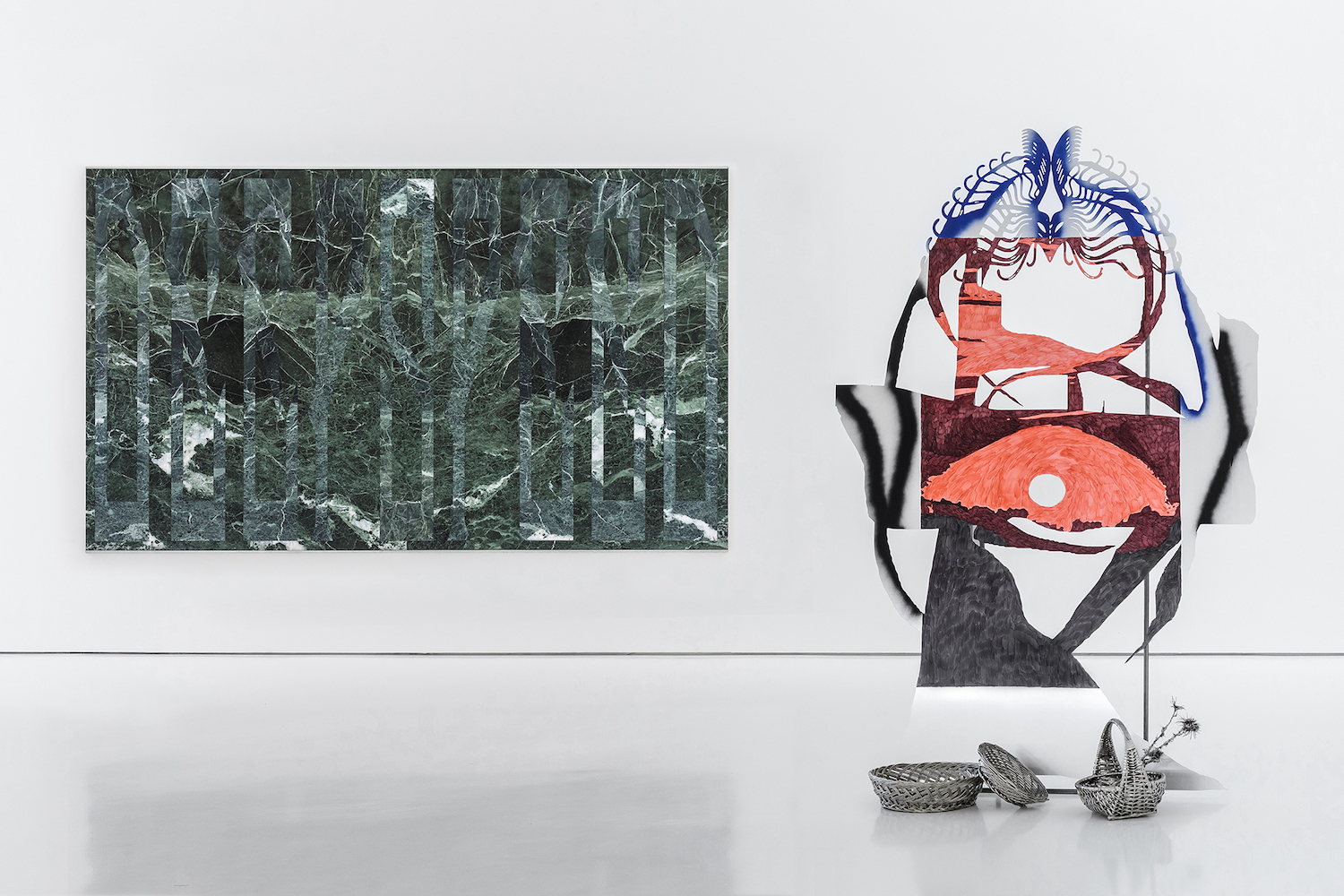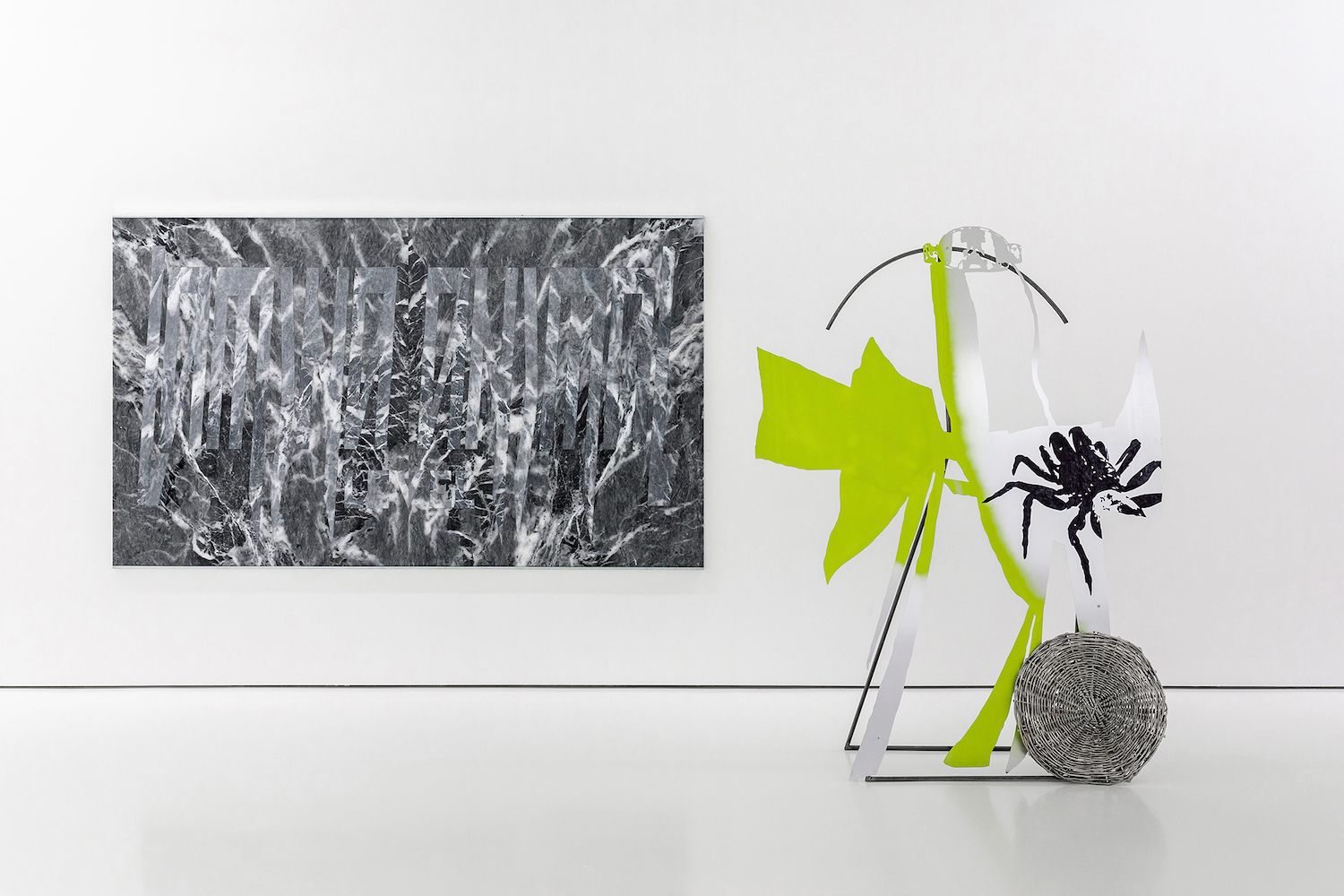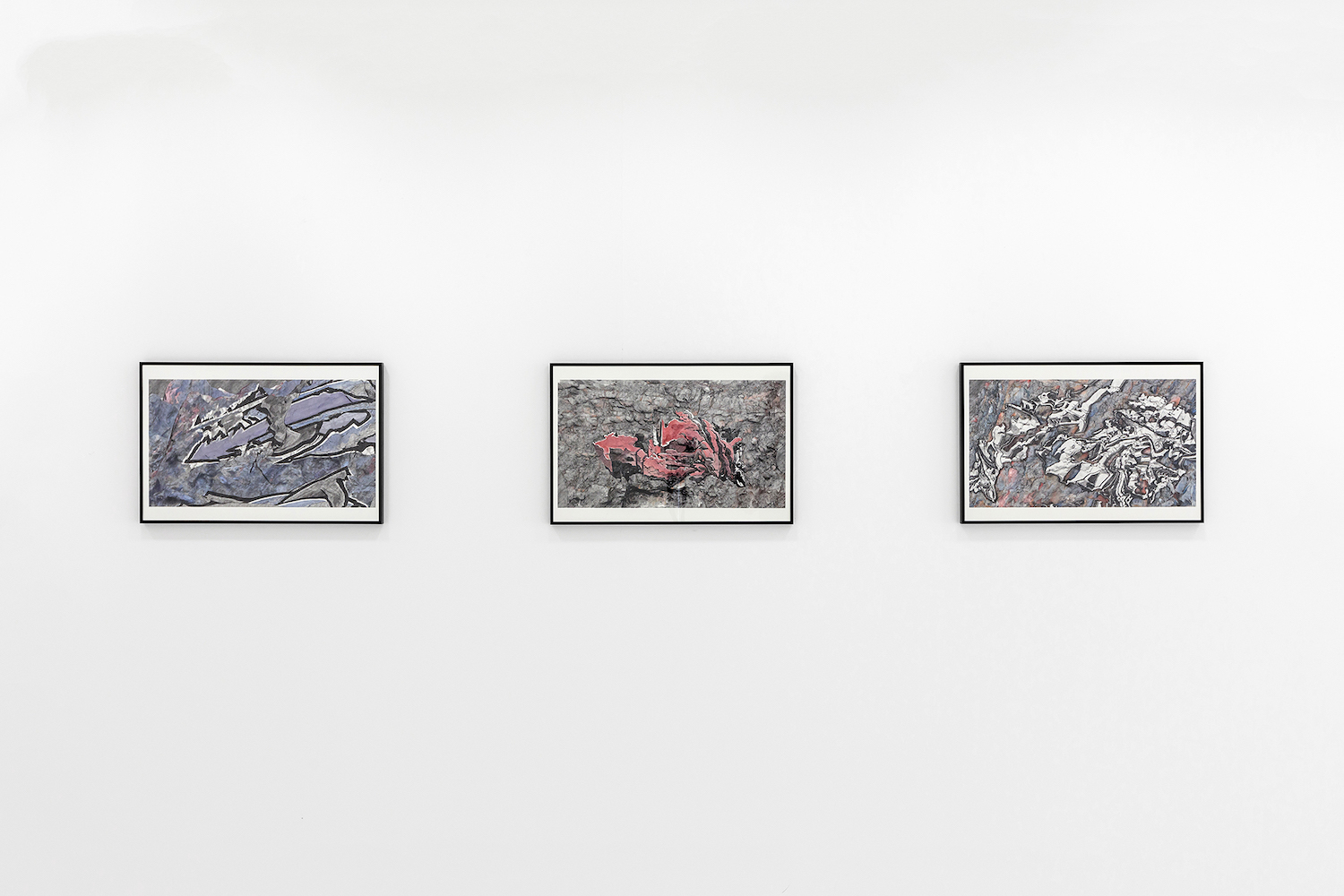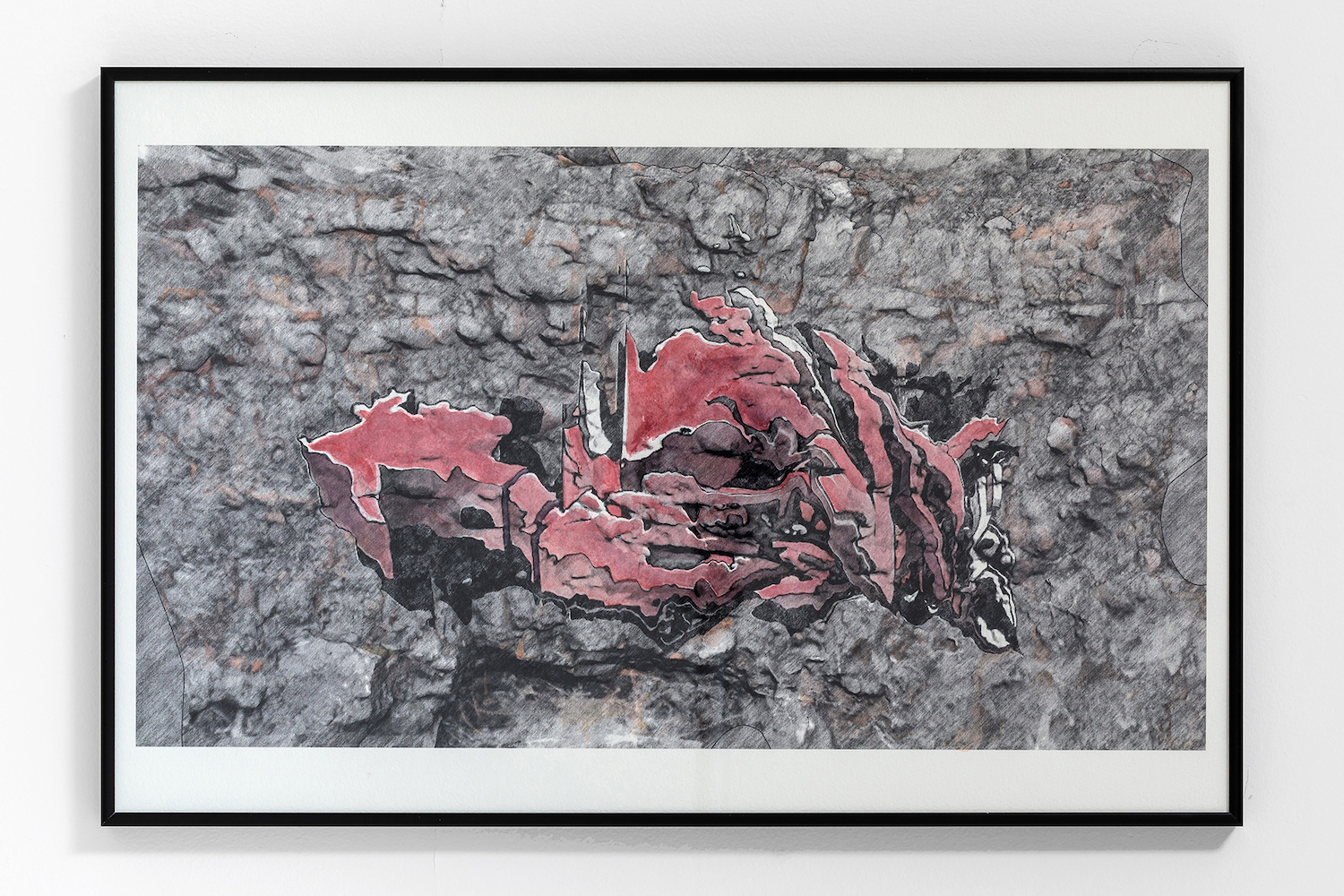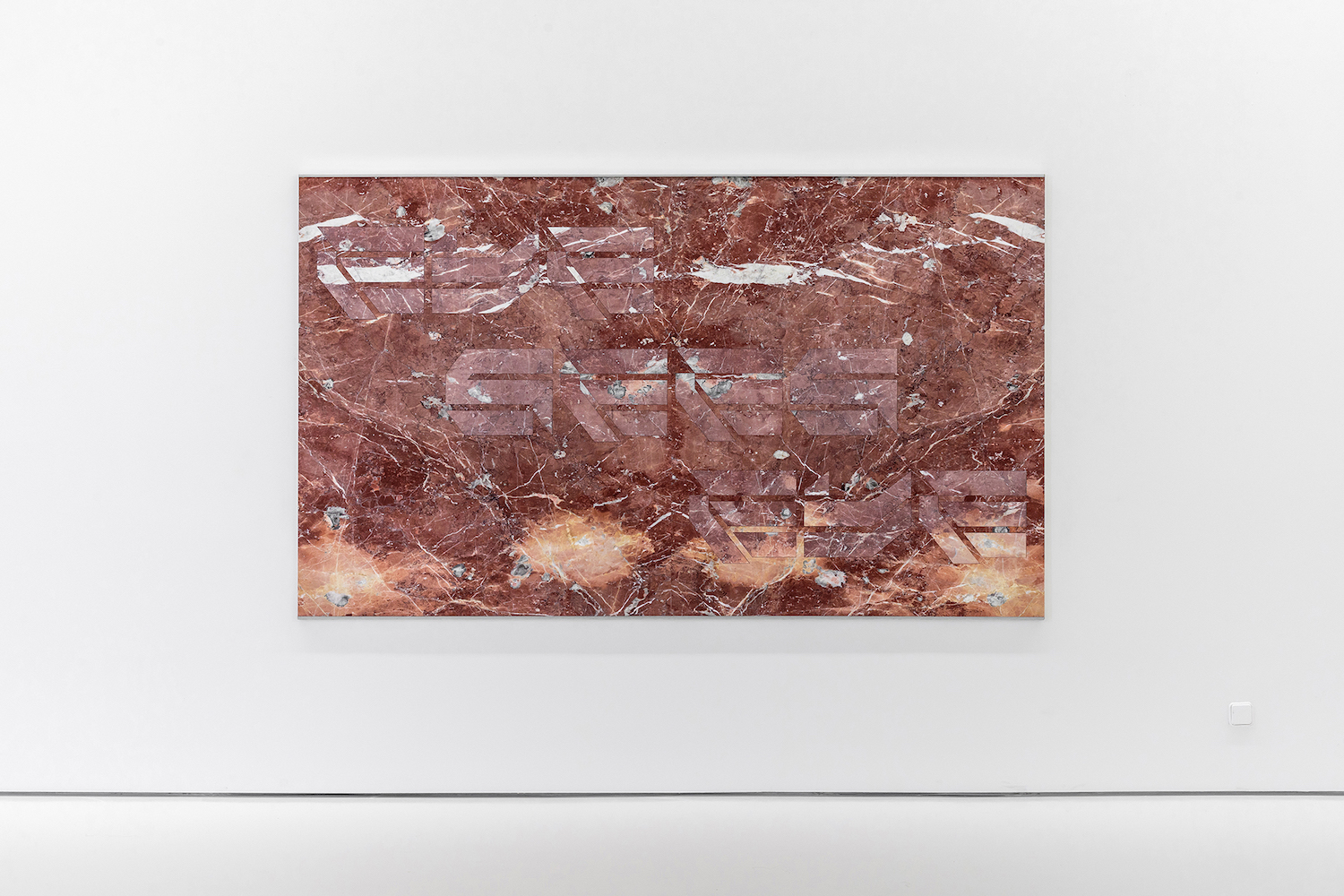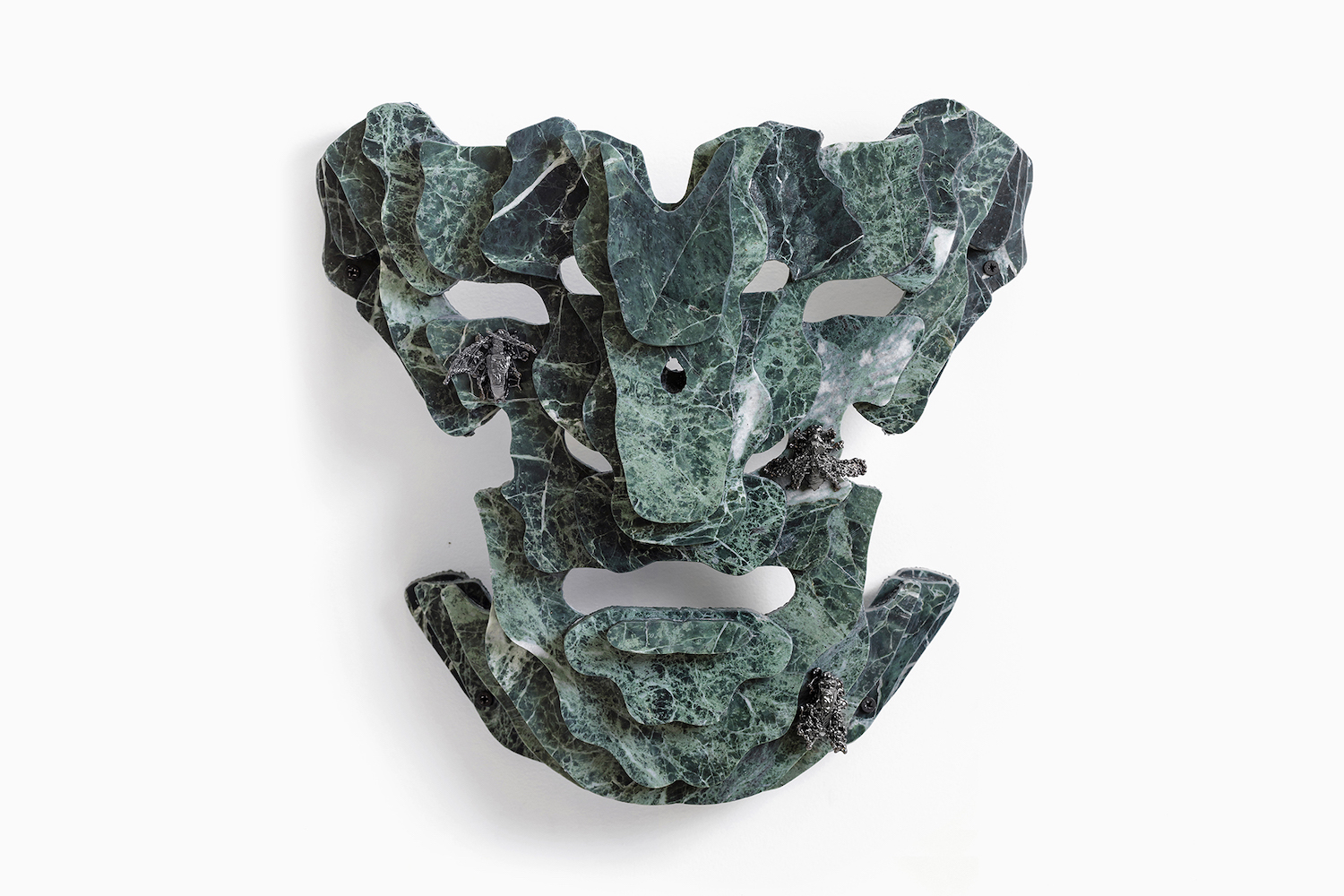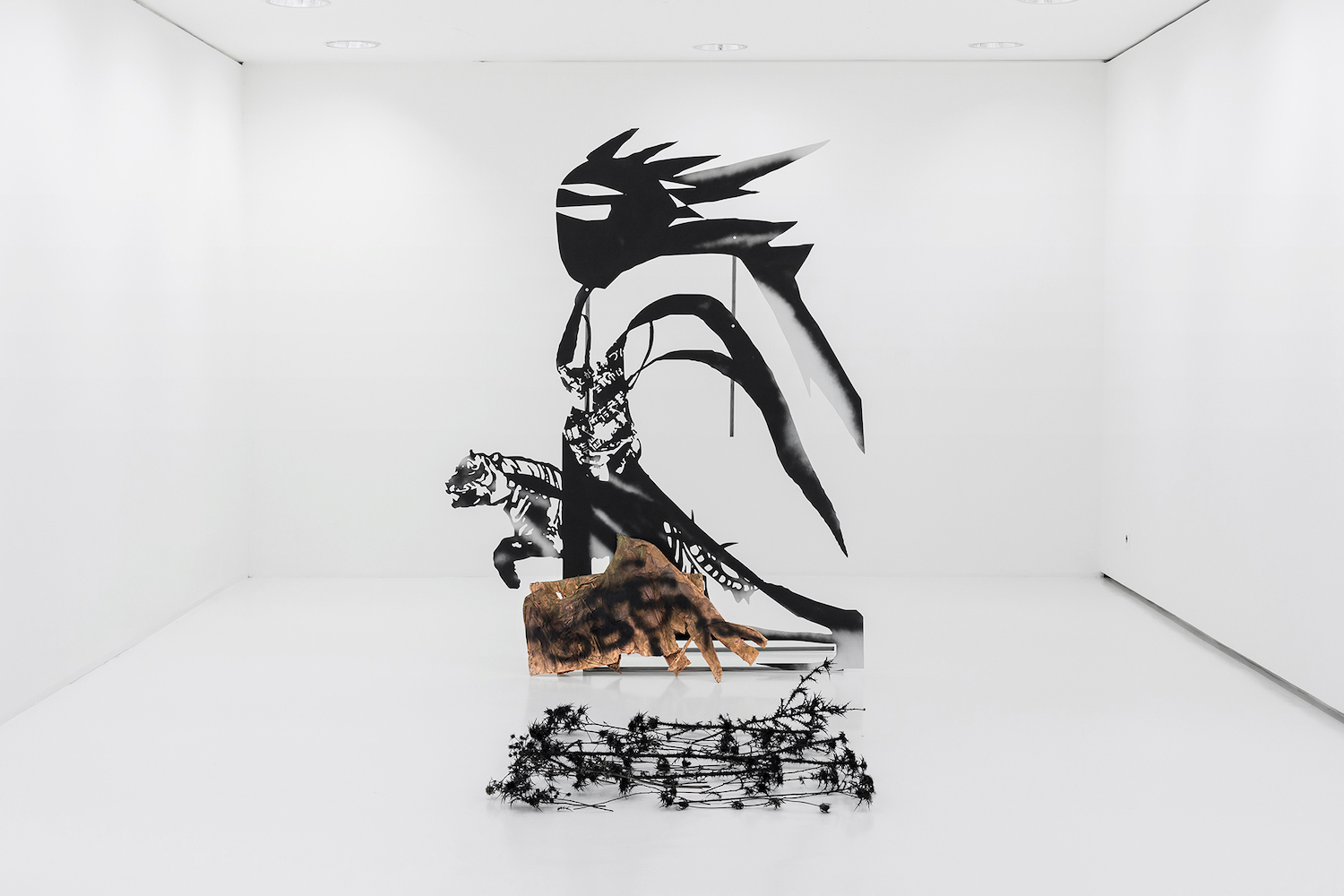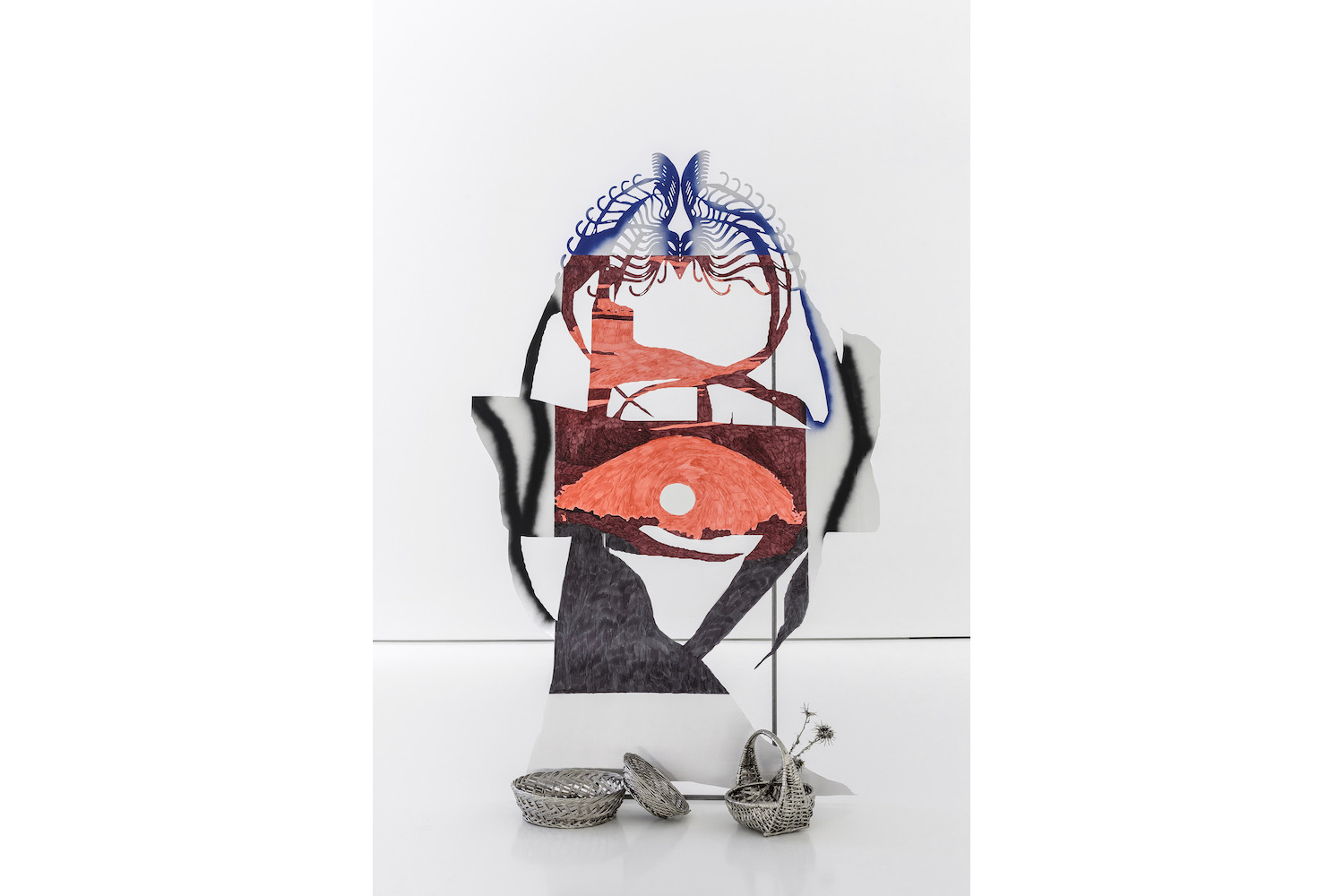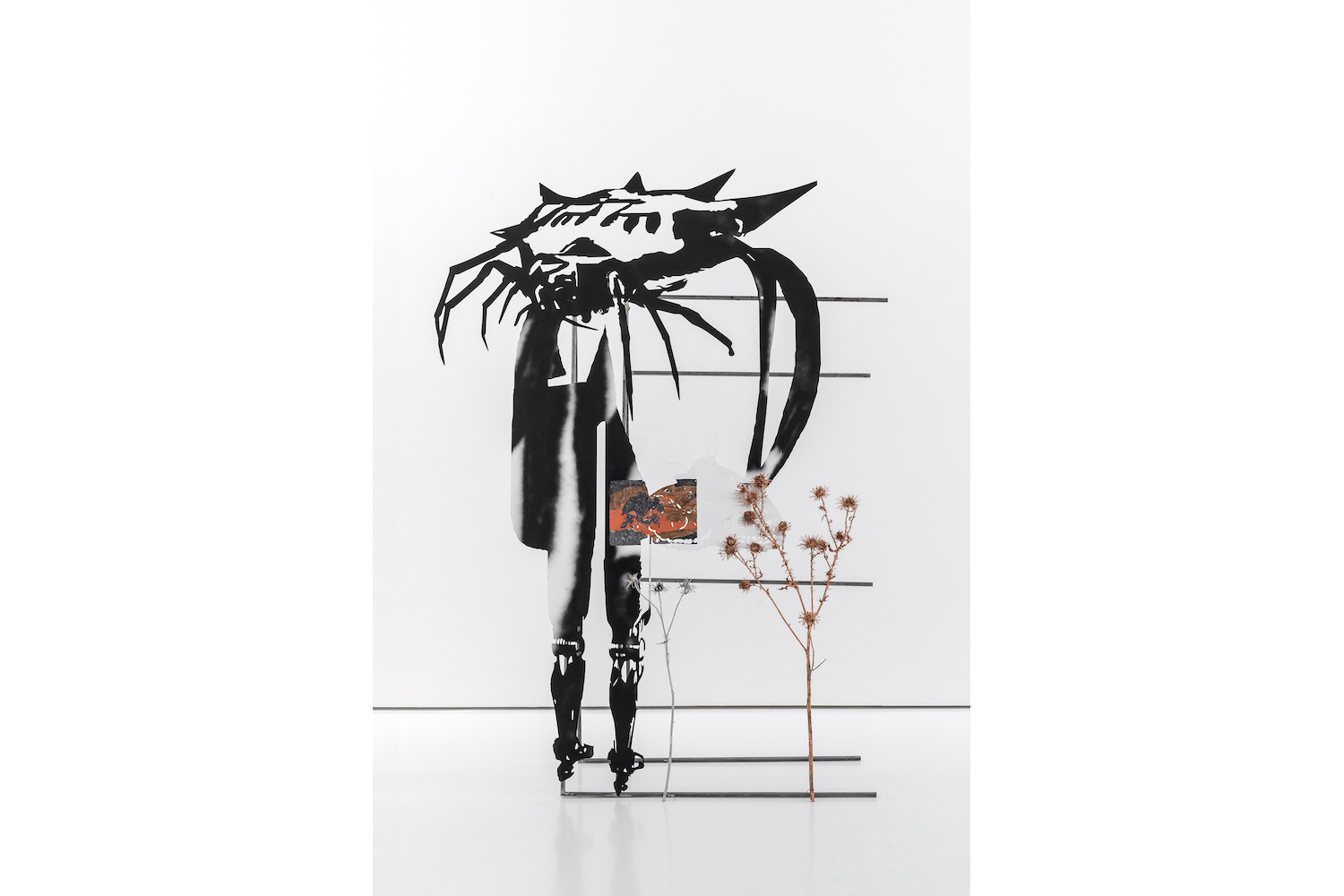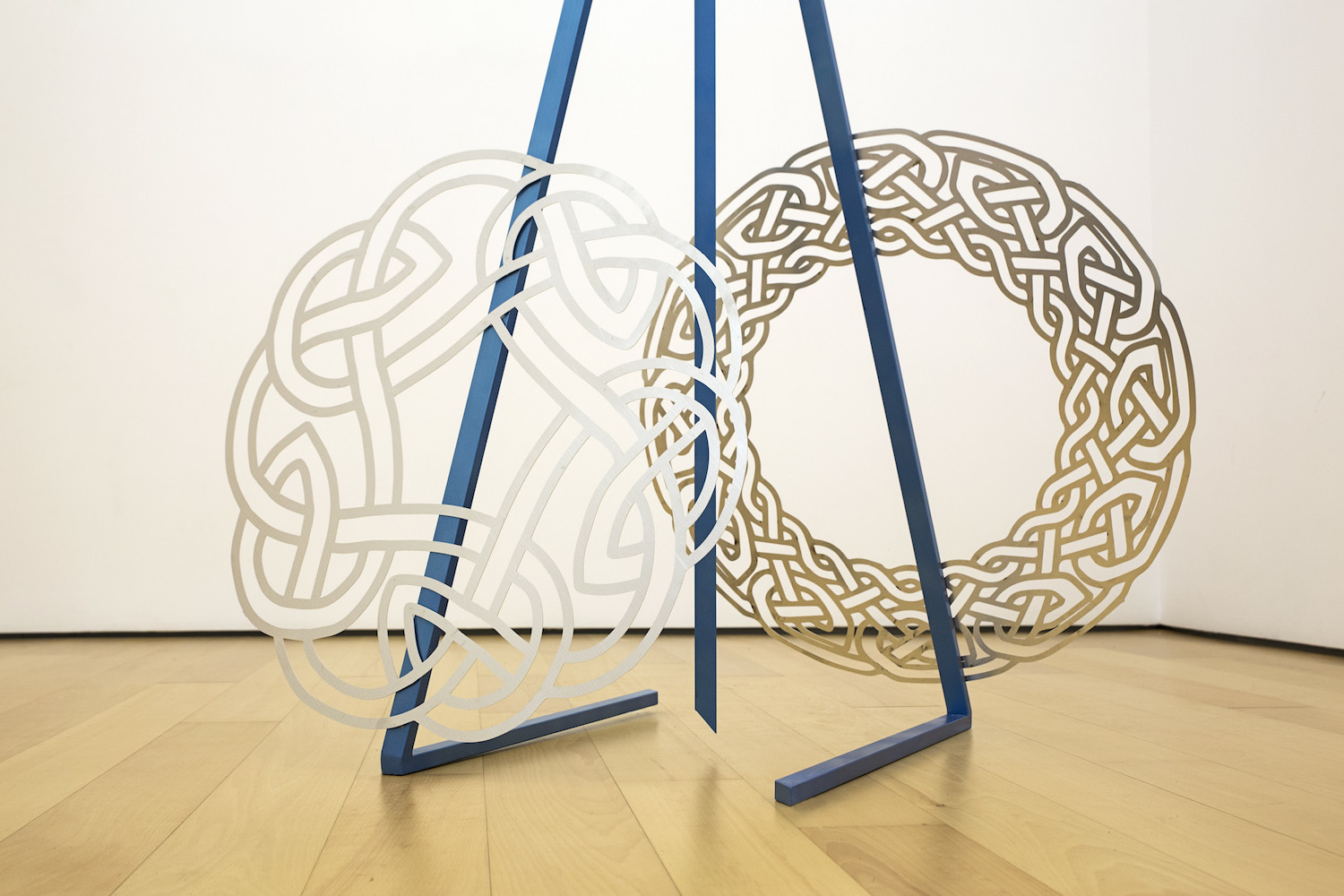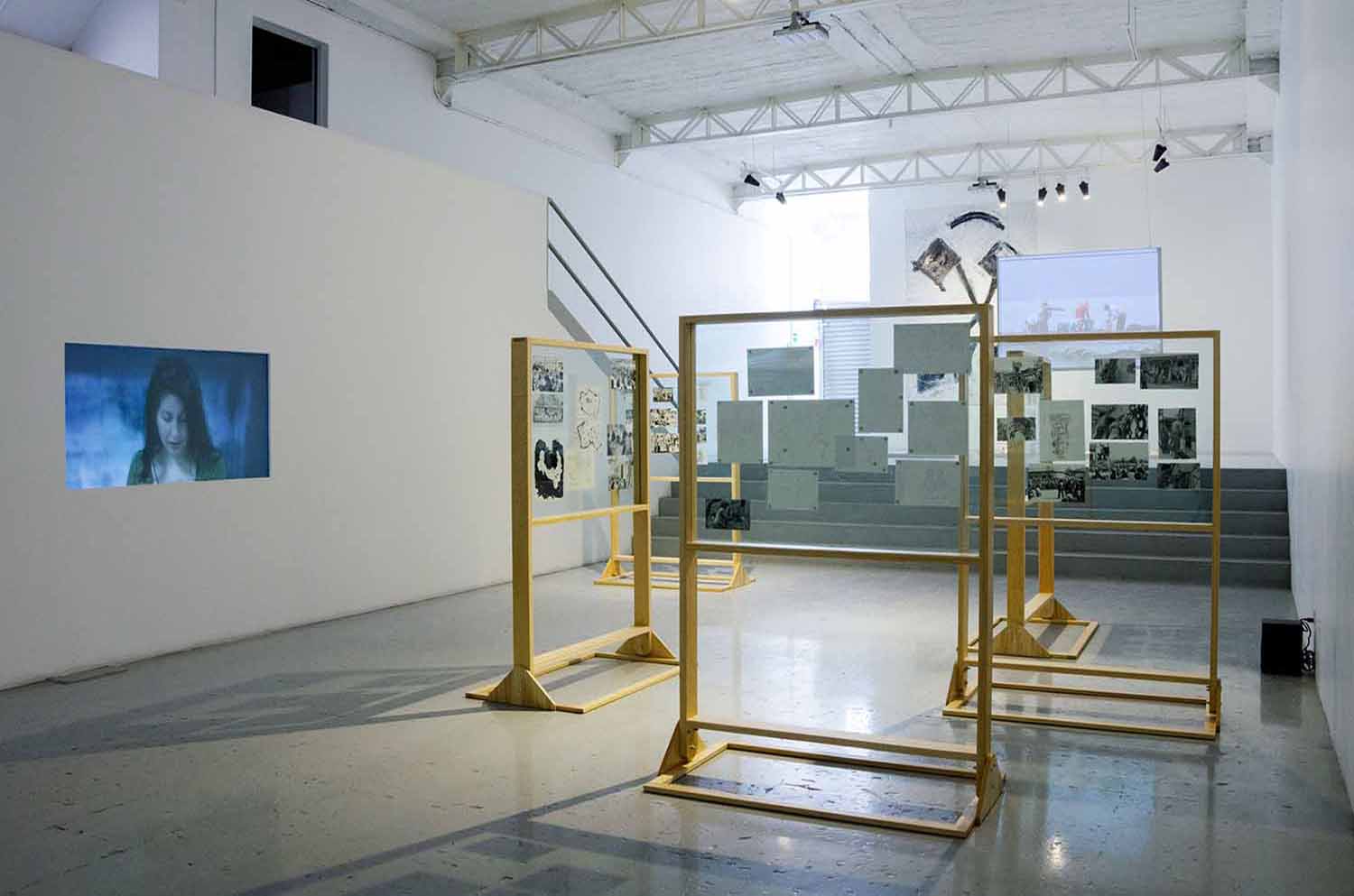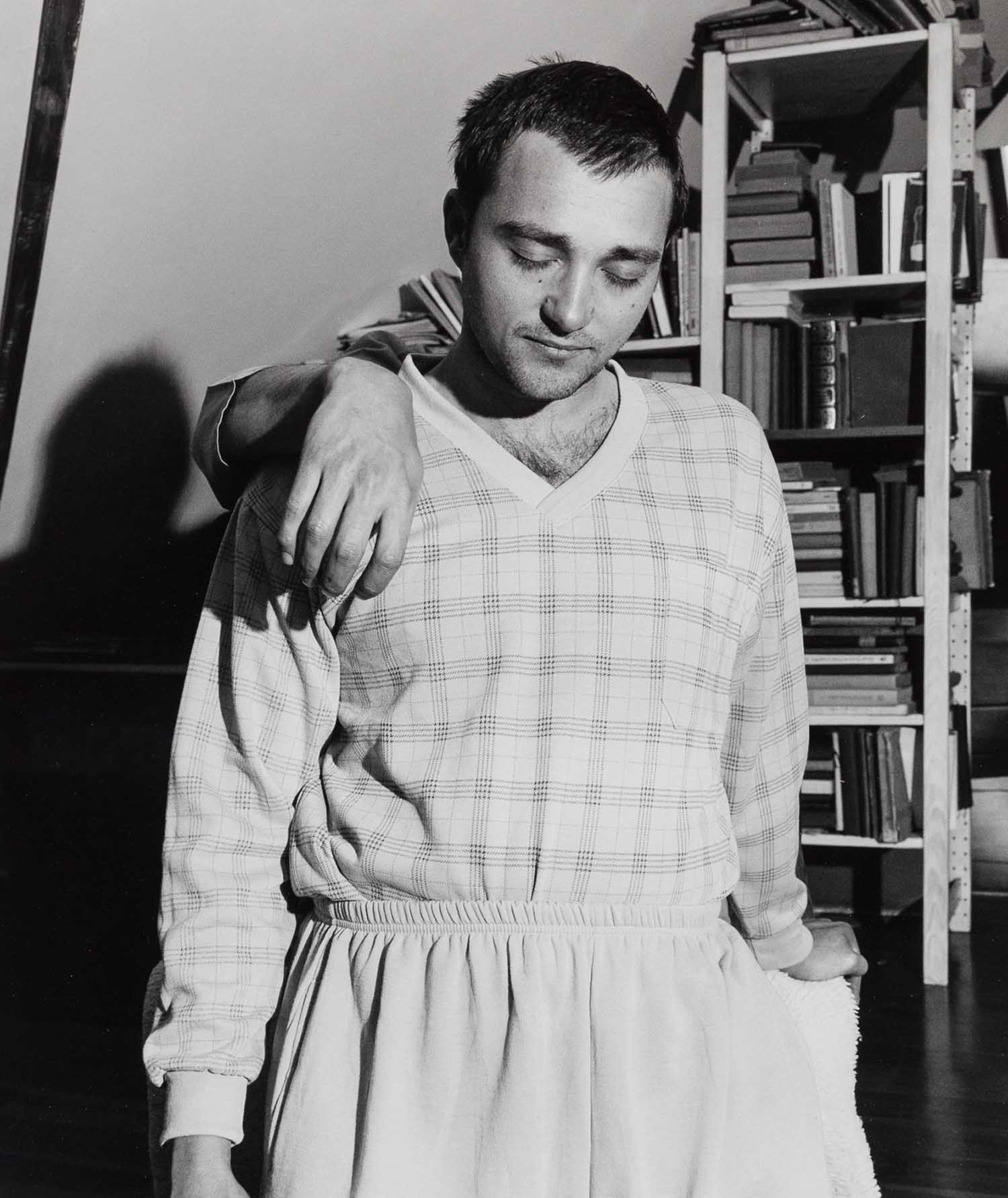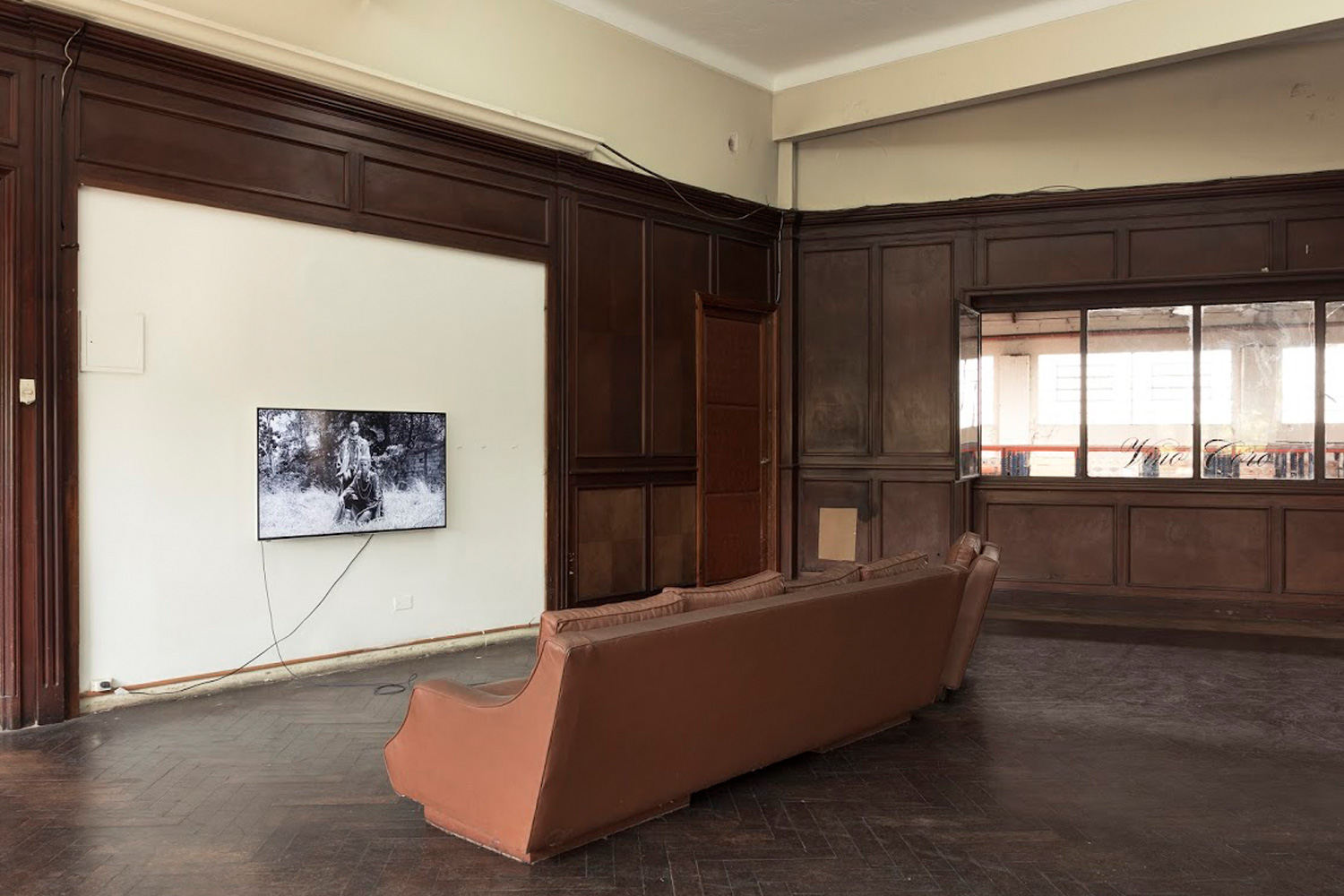On the occasion of their two-person show at Galeria Duarte Sequeira, Athens-based artists Lito Kattou and Petros Moris present a series of works developed out of a shared interest in non-anthropocentric theories and a mutual engagement with their respective practices, investigating notions of time and proposing hybrid subjectivities which emerge from entangled encounters between nature, culture, and technology. The show presents a synergic environment of works at the intersection between painting and sculpture, sensitively opening up new conceptual and formal avenues of interpretation.
Upon entering the gallery, the viewer confronts a series of watercolors on UV prints by Petros Moris, with imagery suggesting rock formations whose geological stratifications are partly covered by younger graffiti-like layers. Despite looking like handmade drawings, the jagged surfaces are the result of a 3-D photoscan reconstruction of the portrayed geological landscapes, here worked digitally and finally hand watercolored. They are a good example of how, throughout the show, technology manifests as a deeply mediating force within nature and culture, altering perceptions of flatness and three-dimensionality. The interest in material, cultural and technological stratification is foundational to Moris’s practice and his works often combine the traditional — mostly related to sculpture and archeological finds — with more contemporary formal solutions that originate from internet culture and the impact of technology. The result is a sort of rift in time, a historical glitch where past, present, and future are scattered and deconstructed. In the context of “Teras Terra”this temporal interrogation depends on a material investigation of marble surfaces in which the natural veining and patterning of the stone — indexes of slow formation and geological time — are interrupted by inscribed palindromes and anagrams whose bidirectional readability unveil cracks in the linearity of both language and time.
A destabilizing of time within materiality also manifests in Lito Kattou’s sculptures, which freeze the movements of hybrid nonhuman characters while preserving and rematerializing traditional and natural artifacts, adding a certain narrative dimension to the show. Digitally fabricated aluminum sheets are adorned with hand-painted drawings, while wicker baskets and flowers collected in the Mediterranean take on a new metallic skin through electroforming processes that suspend in time the organic matter. Such fossils are the belongings of six ethereal, non-gendered creatures whose shapes gracefully show the potential of multispecies becoming. The six beings present themselves as flat bodies composed of animal, mythical, and technological fragments; future warriors and present dreamers of a better place for intersubjectivity, they too exist within multiple times, bringing together different temporalities and generating a sense of still-but-continuous metamorphosis. Lito Kattou often deals with ideas of agency and otherness within her practice, and in this two-person show developed out of conversation and exchange, it is apt that Petros Moris also presents marble characters generated from 3-D scans of spare branches and small plants, merging anthropomorphic features with nickel-plated insects of all sorts.
The formal openness of the works, situated between painting and sculpture, relates to the perception of flat screens as well as the layered materiality of 3-D digital rendering. The configurations presented by Lito Kattou, with a flat but sculptural presence, and Petros Moris, with a reinterpretation of materials traditionally associated with sculpture, open up new propositions for the public art of tomorrow, at a moment when the removal of public statues potentially leaves space for new solutions.

